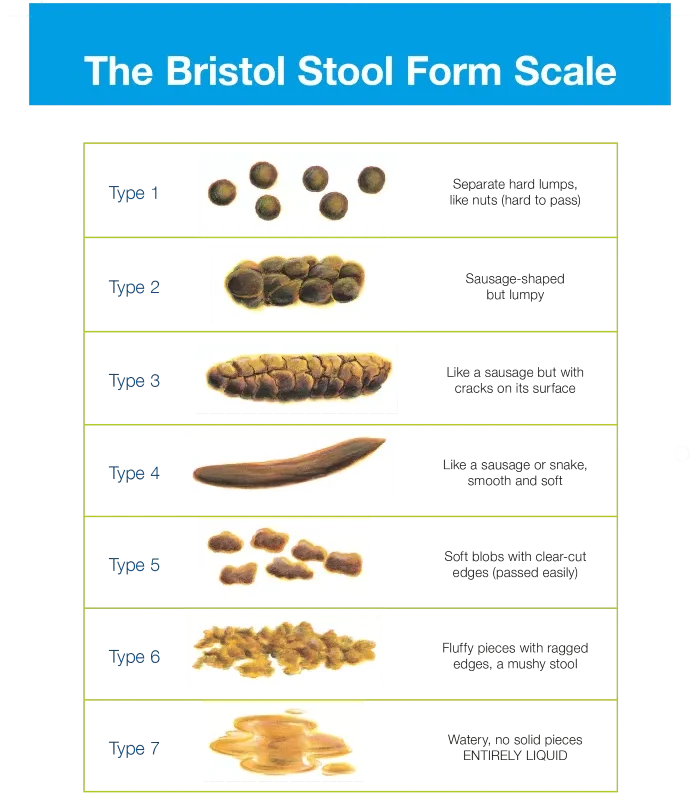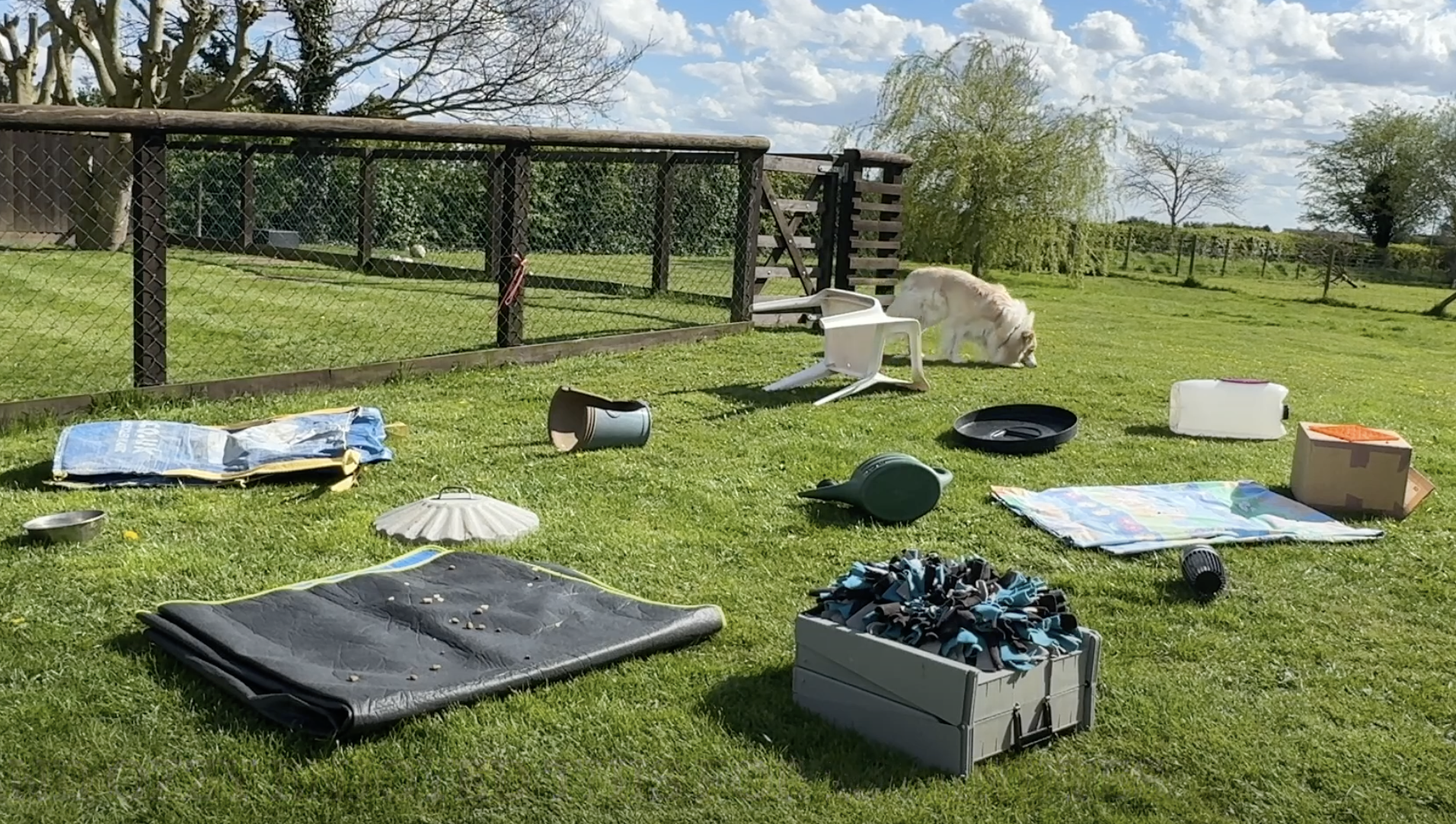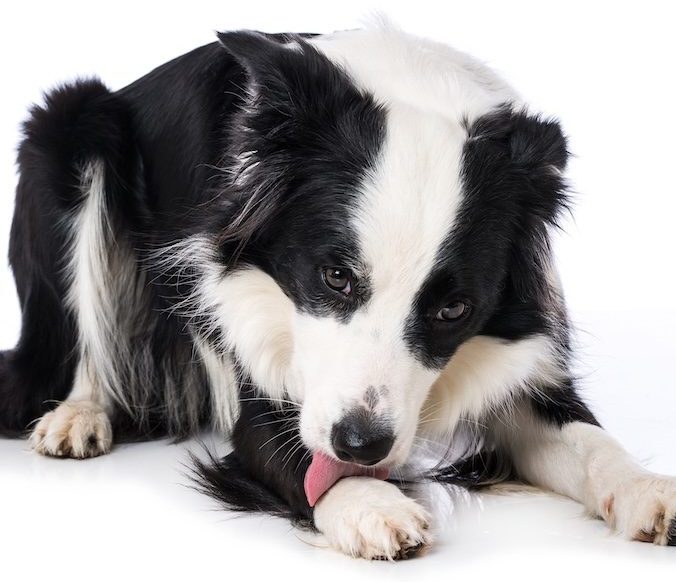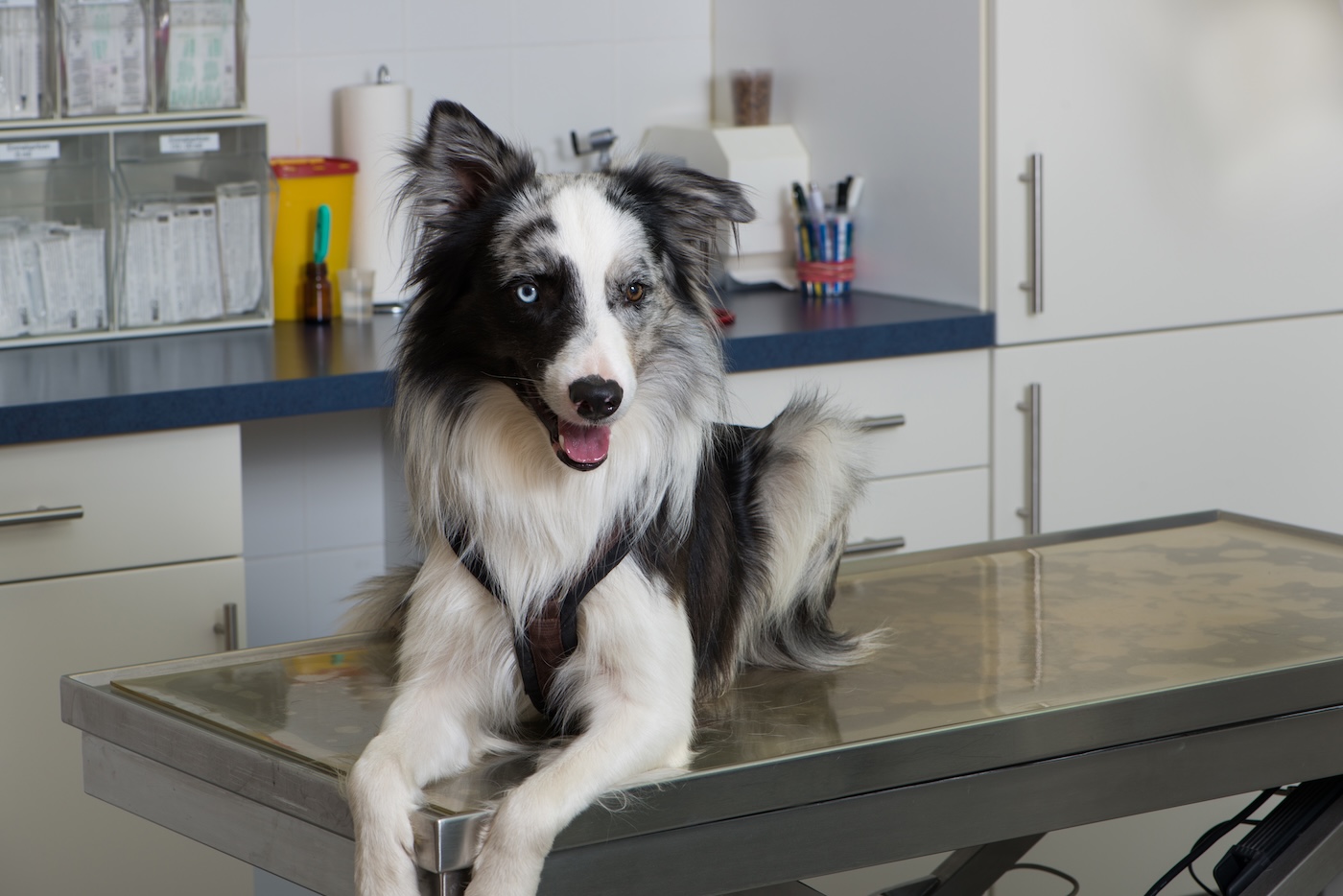Vet checks for your collie! Very often in online articles or in social media groups, we are advised to get our dog “vet checked”. But often, we aren’t sure what might be wrong. Our dog might seem physically fine, but be behaving in a way that indicates they could be experiencing discomfort, so it’s difficult for vets to know where to start in the short ten minute appointment that they have with our dogs. This is often why they may often say that they seem fine and refer you on to a behaviourist, knowing that we have longer to work with the dog and pinpoint areas that may be an issue.
So when you first take them, it’s important to help out the vet as much as possible. In their short time with you they need to ask you what’s been happening and examine your dog. This isn’t long enough when you’re not sure what might be wrong, or if your dog can’t be examined, and it’s difficult for them to know how to help.
Help your vet out
When I’m working with dogs that I suspect may be feeling discomfort, but with no obvious physical symptoms, I help vets out by gathering as much information as possible. And you can do this too.
Suspected gastrointestinal issues
So for example, if you’re worried that they have gastrointestinal issues, you can do the following:
- Keep a diary for at least a couple of weeks – note down each day when they eat, and note times they are more unsettled, or more likely to practise problem behaviours such as unwanted chewing, licking furniture, digging in the house, excessive rolling on their back or more biting and mouthing.
- Use a poo chart – the attached Bristol poo chart is really useful to note down the type of poo you are seeing each time they go to the toilet. You could also take photos of any very unusual poo and add them to the diary. Ideally dog poos shouldn’t leave a residue when picked up, so anything that is softer isn’t ideal.

- Vomiting, passing wind or burping – note these in the diary as well. And also note if they go into the “downward dog” position a lot as they can do this while they’re experiencing tummy pain.
- Anything else – also note anything else that could have influenced their tummy such as excessive treats one day, stealing a chicken or eating something dodgy on a walk!! And note any supplements you might have been trying.
- Try to keep it brief – the vet will only have ten minutes with you so summarise as much as possible. Use bullet points. No long bits of text.
Suspected musculoskeletal issues
In the same way, we can gather evidence is we suspect there may be something wrong with our dogs joints or soft tissues, even if there is no obvious limping.
- Again, keep a diary, noting any strange gaits, limping, hopping or skipping. “Bunny hopping”, where a dog moves both back legs together instead of one at a time can be a sign of back end issues such as hips or luxating patella, where the knee cap slips out of place. Hopping is another sign and we often see this when dogs go up and down steps.
Also note when dogs are walked and how far, and note if any behaviours are worse after walk, including the day after. - Gait video for analysis – this video explains how to take a gait video for analysis and will help your vet to clearly see any issues with how your dog is moving.
- Free work video – free work is an amazing activity for dogs that is help in SO MANY contexts, but as a diagnostic tool, it’s amazing. It involves your dog moving freely and interacting with different objects, at different heights, and on different floor textures. We can see how your dog moves each leg, how they move their body and head, whether they are more likely to engage with items at a high level than a lower level, the list goes on. This free work video explains more about how to set up and film free work.

- “Mooching” videos – footage of your dog just mooching in the garden or on a walk are also very helpful. Just like with free work, they are moving freely, of their own choice, and we can see how they choose to use their bodies as they move in a familiar environment.
- Videos of your dog toileting – it sounds unpleasant videoing dogs toileting but it’s incredibly useful for behaviourists and vets. Toileting puts strain on the dog’s back end, so we often see dogs in pain moving about more while toileting instead of staying in one place. We may see them lifting a leg while pooing, or see bitches lifting a leg while weeing. We may see dogs hopping before or after lifting a leg, or notice lip licking, stretching, yawning, rolling or shaking off after toileting which can indicate discomfort. We sometimes see dogs turning and nibbling their back after toileting which can indicate something is painful or irritating. This is why we need to see several seconds before and after toileting, not just the act itself.
- Other videos – other helpful videos include going up and down steps, and moving from one position to another, both when the dog has just woken up (so may be less supple) as well as when they have been moving.
Other behaviours indicating pain or discomfort
Note any other behaviours that might indicate pain or discomfort – any of the following need highlighting to the vet:
- Being reluctant to get up once settled in the evening
- Being aggressive when asked to move when settled
- Not wanting to jump onto things or go up stairs
- Not wanting to walk across slippery flooring – often a sign of spinal issues
- Reluctance to get into the car – both because jumping in can be painful but also because travelling can cause discomfort
- Stopping on walks – with collies who are so active, this is almost always a sign of pain
- Sound sensitivity – this research by Lopes et al (2018) has shown that sound sensitivity and pain are often linked in dogs.
- Any type of reactivity – with familiar people, unfamiliar people, dogs or traffic can be a sign that the dog is struggling
- Sudden turning to nibble any part of the body while engaged in an activity or while settled
- Repetitive licking of body parts or surfaces

- Any abnormal repetitive behaviour – shadow chasing, spinning, fly snapping
- Showing aggression or avoidance when handled – putting on a harness, being groomed, towel dried or excessive fear of vets
- Inability to settle and sleep in the house during the day
- Moving position a lot and being unsettled and waking up owners overnight
- Unpredictable behaviour from the dog – sometimes they are fine, but other times they behave differently for no obvious reason
Basically any time the dog’s behaviour does not make behavioural sense can cause us to be suspicious of pain or discomfort. Individually these behaviours don’t mean your dog is in pain, but when you are seeing several, it’s worth noting them and letting your vet know. A brief bullet point list is all that is needed, and having brief videos of these can also be helpful.
Finally
I am advising you to give a lot of information to the vet here, and they may not have time to review it all during their time with you. But at least they know that you have it, and it’s there if they need it. The fact that you have taken the time to prepare the evidence will help them to understand that you are concerned, and they are more likely to take your suspicions seriously and look into things you are worried about.
In my experience, when owners are worried about something gastrointestinal or musculoskeletal issues, they are rarely wrong, so trust your gut and see the vet – but present information that will make their job easier!

